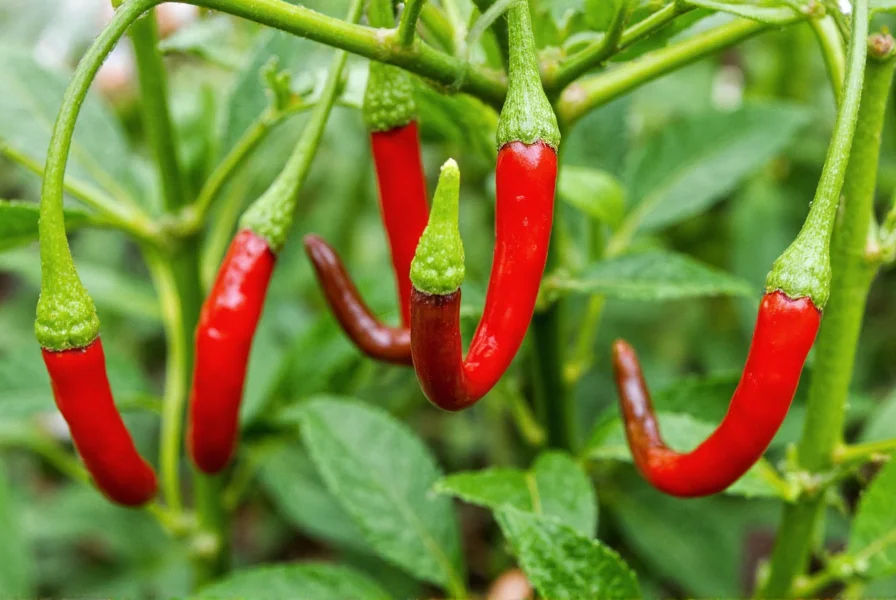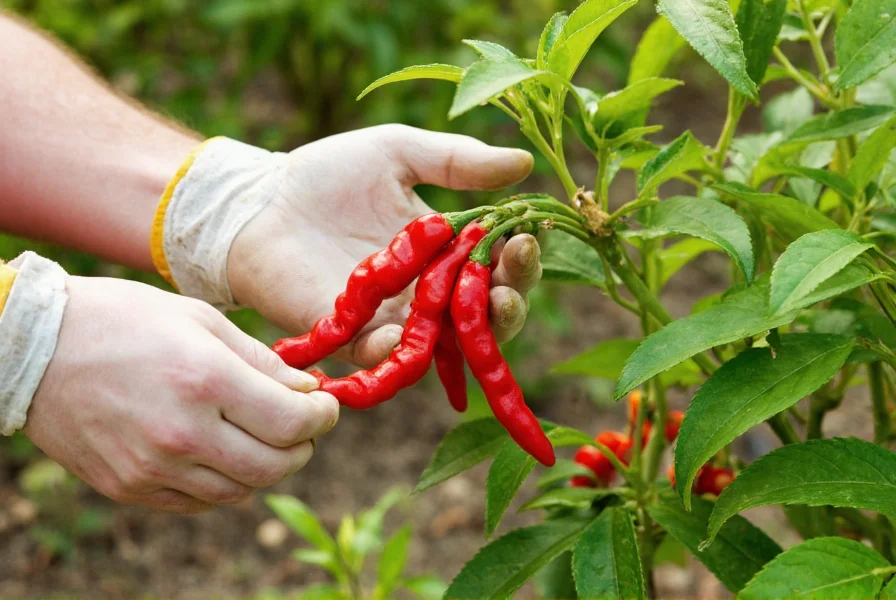If you've encountered the term "taybor pepper" in a recipe, gardening discussion, or food product label, you're likely dealing with a common misspelling of tabasco pepper. This confusion happens frequently due to similar pronunciation and regional spelling variations. Let's clarify everything you need to know about these fiery little peppers that give Tabasco sauce its distinctive kick.
What Exactly Are Tabasco Peppers?
Tabasco peppers (Capsicum frutescens var. tabasco) are small chili peppers measuring approximately 1.5-2.5 inches long with a distinctive tapered shape. They grow upright on the plant rather than hanging down like many other pepper varieties. These peppers begin life green and gradually ripen through yellow and orange stages before reaching their final bright red color.
When discussing tabasco pepper heat level, they register between 30,000-50,000 Scoville Heat Units (SHU) on the Scoville scale. This places them significantly hotter than jalapeños (2,500-8,000 SHU) but milder than habaneros (100,000-350,000 SHU). The heat builds gradually rather than hitting immediately, with fruity undertones that make them popular for hot sauces.
| Pepper Variety | Scoville Heat Units | Flavor Profile |
|---|---|---|
| Tabasco Pepper | 30,000-50,000 | Fruity, citrusy, moderate heat build |
| Jalapeño | 2,500-8,000 | Grassy, vegetal, immediate heat |
| Habanero | 100,000-350,000 | Tropical fruit, intense immediate heat |
| Cayenne | 30,000-50,000 | Sharp, pungent, consistent heat |
The History Behind Tabasco Peppers
Despite the name suggesting Mexican origin (Tabasco is a state in Mexico), tabasco peppers actually originated in Central America. The confusion stems from the famous Tabasco sauce, which was created in the 1860s by Edmund McIlhenny on Avery Island, Louisiana. He named his sauce after the Mexican state because he believed the peppers came from there, though historical evidence suggests they were likely brought to Louisiana from Central America.
Today, when people search for information about growing tabasco peppers commercially, they should know that McIlhenny Company still grows tabasco peppers on islands near the equator (primarily in Central America and Africa) to ensure consistent quality for their famous sauce. The peppers require specific tropical conditions to reach their full potential.

Culinary Uses Beyond Hot Sauce
While most people associate tabasco peppers with the iconic hot sauce, they have numerous culinary applications. Home chefs searching for tabasco pepper recipes beyond sauce might try:
- Infusing vinegars and oils for spicy condiments
- Adding to salsas for moderate heat with fruity notes
- Pickling whole peppers for garnishes
- Drying and grinding into custom spice blends
- Adding to Bloody Mary cocktails for authentic heat
When substituting tabasco peppers in recipes, understand that they differ from cayenne peppers despite similar heat levels. Tabascos have more fruitiness while cayennes deliver sharper, more consistent heat. This distinction matters when searching for tabasco pepper vs cayenne substitution guidelines.
Growing Tabasco Peppers at Home
Gardeners interested in growing tabasco peppers in home gardens should know these plants require warm temperatures (70-85°F), full sun, and well-draining soil. They typically reach 3-4 feet in height and produce peppers 80-100 days after transplanting.
Unlike many pepper varieties that hang downward, tabasco peppers grow upright on the plant, making them easier to spot when harvesting. For best results, pick them when fully red, though they can be used at any stage of ripeness. Remember that handling these peppers requires caution—always wear gloves when cutting or processing to avoid skin irritation.

Why the "Taybor Pepper" Confusion Happens
The misspelling "taybor pepper" likely stems from several factors:
- Phonetic similarity: "Tabasco" pronounced quickly can sound like "Tah-bahs-co" which some might interpret as "Tay-bor"
- Regional dialects: Certain accents may blend the "s" and "c" sounds
- Typographical errors: Common keyboard misstrikes between "s" and "b" keys
- Limited familiarity: People unfamiliar with the term might reconstruct it based on similar-sounding words
This type of misspelling is so common that when researching common tabasco pepper misspellings, "taybor," "tabor," "tabar," and "tabasco" all appear in search data. Professional chefs and gardening experts frequently encounter this confusion when advising home cooks.
Preserving and Storing Tabasco Peppers
For those who've successfully grown or purchased tabasco peppers, proper storage extends their usability. Fresh peppers last 2-3 weeks in the refrigerator crisper drawer. For longer preservation:
- Freezing: Whole peppers freeze well for 6-8 months without blanching
- Drying: Use a dehydrator or oven on lowest setting until brittle, then store in airtight containers
- Vinegar preservation: Create spicy vinegar infusions that last 6+ months
- Oil preservation: Submerge in oil with garlic for refrigerator storage up to 1 month
Understanding these preservation methods is crucial when exploring long-term storage solutions for tabasco peppers, especially for gardeners with abundant harvests.










 浙公网安备
33010002000092号
浙公网安备
33010002000092号 浙B2-20120091-4
浙B2-20120091-4